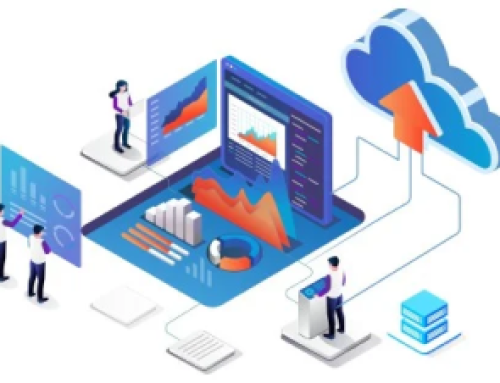Latest technological advancements like cloudification, virtualization and software based approach, among many others, have completely transformed the landscape for telecom service providers.
The lines between system integrators and telecom service providers are quickly blurring as system integrators expand their scope to offer high availability services that were so far possible only through a telecom operator. Systems integrators have taken advantage of the rapid transformations and new-age technologies to gain a foothold in the global telecom service marketplace.
On the other hand, with 5G services being rolled out along with edge computing and network slicing, several service providers are looking to develop new professional services and IT services capabilities. They have natural and unique advantages in terms of access to varied data sources at scale. By leveraging Artificial Intelligence/Machine learning, they can automate network operations, enhance customer experience, and develop innovative business models that can give them a competitive edge. However, developing these portfolio components involves extensive use of software skill sets, including virtualization, automation, and orchestration, traditionally associated with system integrators.
There is an opportunity for telecom operators to acquire system integration capabilities (either inhouse or through right partner) to go up the value chain and launch new products and services to witness stronger revenue growth and deliver superior customer experience.
The Greener Pastures
There is a growing need for telcos to go beyond offering commoditized voice and data services to add new revenue streams and provide digital experiences to their customers. Edge computing, enabled by 5G, is a perfect opportunity for CSPs to offer innovative services to subscribers and enterprises.
One of the key 5G opportunities for telcos is in private networks for the enterprises. A growing number of enterprises from different verticals are seeking to build 5G-enabled private wireless networks to support their communication requirements.
While telcos are experts in setting up secure communications networks, enterprises need to deploy multiple business applications on the same. The telecom services providers will have the opportunity to host these applications and provide a low-latency experience if they have the right skillsets. Over time, telecom operators can become SaaS service providers, providing a set of integrated systems and customized vertical services as required. This can expand their service portfolio significantly.
While several models are being explored worldwide, systems integrators are likely to play a crucial role in helping enterprises accelerate their 5G private networks journey. There are significant interoperability issues and telecom operators lack the skillsets to put everything together. For instance, Telefonica Tech has recently collaborated with Microsoft to offer private 5G and on-premise edge computing to meet the needs of the enterprises.
Similarly, network slicing, a key aspect of 5G, can be a critical potential. A private network, once created, can potentially back feed to the telecom network to expand and enhance its network coverage. There is a role for multiple orchestrations of use cases.
Another key opportunity area for service providers is the Internet of Things (IoT). Most enterprises have different network and application requirements for different use cases. Furthermore, with virtually no standardization in IoT devices, it is also challenging to integrate them to deliver seamless customer experience. Telcos have the opportunity of stepping in by expanding beyond the IoT NW to build and offer this integrated solution ecosystem. However, this will require them to develop strong system integration capabilities.
5G and IoT are not the only drivers for change in the telecom environment. Dynamic customer expectations and the highly competitive telecom market means that telcos have to transform themselves into Digital Service Providers to meet the new requirements. This has led to the rapid adoption of new technologies among telcos.
Telecom operators, however, have been struggling to build on their strengths to leverage the new opportunities. They often find it challenging to integrate innovative network infrastructure and their current legacy infrastructure as it requires multi-domain technical expertise beyond the telecom domain. Some of the key skills that new generation telecom engineers require include cloud computing, application integration with industry-standard APIs, Big Data/AI/ML, automation, orchestration and network engineering. The first four of these skills are typically seen largely with systems integrators as against telecom operators.
Over a period, telcos are increasingly becoming a sub-vendor to the system integrators, losing out direct connection with the end customer. This also makes it challenging for telcos to bid for large deals. Telcos are striving to move up in the value chain by adopting digital transformation from just a connectivity provider to a full-service provider.
CSPs and SI: A Symbiotic Existence?
The changing ecosystem means that going forward, the CSPs and System Integrators are likely to have a symbiotic relationship. While it is possible to exist without the other, the growth for both of them comes only when they collaborate to leverage the strength of the other.
Telcos can address the massive opportunities of 5G private networks and IoT only if they acquire right system integration capabilities. This will involve having the ability to bridge the gaps in telecom networks and provide integrated systems view and control across the fragmented ecosystem. Provisioning IoT and edge services, for example, require systems integration solutions for overall digital strategy, governance, and operating model. It requires the service provider to design a solution for various use cases and process optimization and implement integration, deployment, training and analytics.
When compared with other technology areas, IoT and edge deployments are particularly complex. IoT projects require skills in several areas, including sensors, connectivity management, cloud, as most of these may be deployed on the public cloud. They require knowledge of IT architecture, data science, and application development which are a traditional forte of System Integrators. Similarly, in 5G, system integrators can play a significant role in bringing together complex systems and enabling new revenue opportunities for telecom operators.
The Inevitable Handshake
The telecom operators stand to gain by working with system integrators rather than seeing them as a possible threat. Several engagement models are emerging between the system integrators and CSPs.
- The SI prime model: The first model is where the telco works closely with a systems integrator for rolling out new services—both bring complementary capabilities and decide who leads the engagement in a specific market (usually the system integrator).
- The telco prime model: Second is where the telco leads the market rolling out new services, with System Integrator playing a secondary partner with no /limited visibility to customers.
- The solo model: The third is where the telco is building and using in-house capability without the need for a systems integrator. This would call for complete overhaul of their business model (which has already been perfected by the System integrators) to deliver profitability.
There is an opportunity for telecom operators to leverage the capabilities of the right system integrator to go up the value chain and thereby witness stronger revenue growth and better customer experience. They also help manage the complexity of multi-domain, multi-technology and multi-vendor environments. However, it is critical to identify the right kind of partner depending on the business priorities of the telco. While some system integrators offer strong geographic coverage, there are others with strong domain focus (e.g. a telecom focussed player with better understanding of the telco architecture and challenges).
There are several examples globally wherein telcos are looking at partnering with systems integrators to access this new opportunity. One prominent example is the partnership between IBM and AT&T in the US market, wherein AT&T leverages IBM’s systems integration expertise to build out new services. As a part of the deal, AT&T Business will become IBM’s primary provider of software-defined networking while AT&T Business will also help transform IBM’s networking solutions with their latest technologies, including 5G, Edge Compute, IoT as well as multi-cloud capabilities using Red Hat.
Closer home, Bharti Airtel is leveraging a similar opportunity by partnering with Tata Consultancy Services (TCS). Bharti Airtel will pilot and deploy TCS’ technology as part of its 5G rollout plans, as per the deal. The Tata Group company has, on its part, developed an O-RAN based Radio and NSA/SA Core and has integrated a totally indigenous telecom stack.
Specifically in the telecom domain, there are players like Tata Communications Transformation Services (TCTS) with a strong telecom pedigree. Years of experience of working closely with several tier-1 telcos globally gives TCTS a strong understanding of the telco mindset, core competencies and pain points helping it create a niche positioning to the telcos.
In summary, it is critical for the telcos to acquire system integration skills to offer a more integrated solution to the customer and gain stronger customer intimacy. A closer collaboration with system integrators can be key to strengthen their capabilities to support the new and evolving requirements of their customers. Every service provider has different needs, so there is no one-size-fits-all partnership model. Hence it is critical to identify the right partner with the right skill sets and experience for smoother collaboration and fruitful relationship.






















![Telco Cloud: A Key Enabler to Telco Transformation [Part 1]](https://www.tatacommunications-ts.com/wp-content/uploads/2023/06/Telco-Cloud-blog_image-1-500x383.png)







